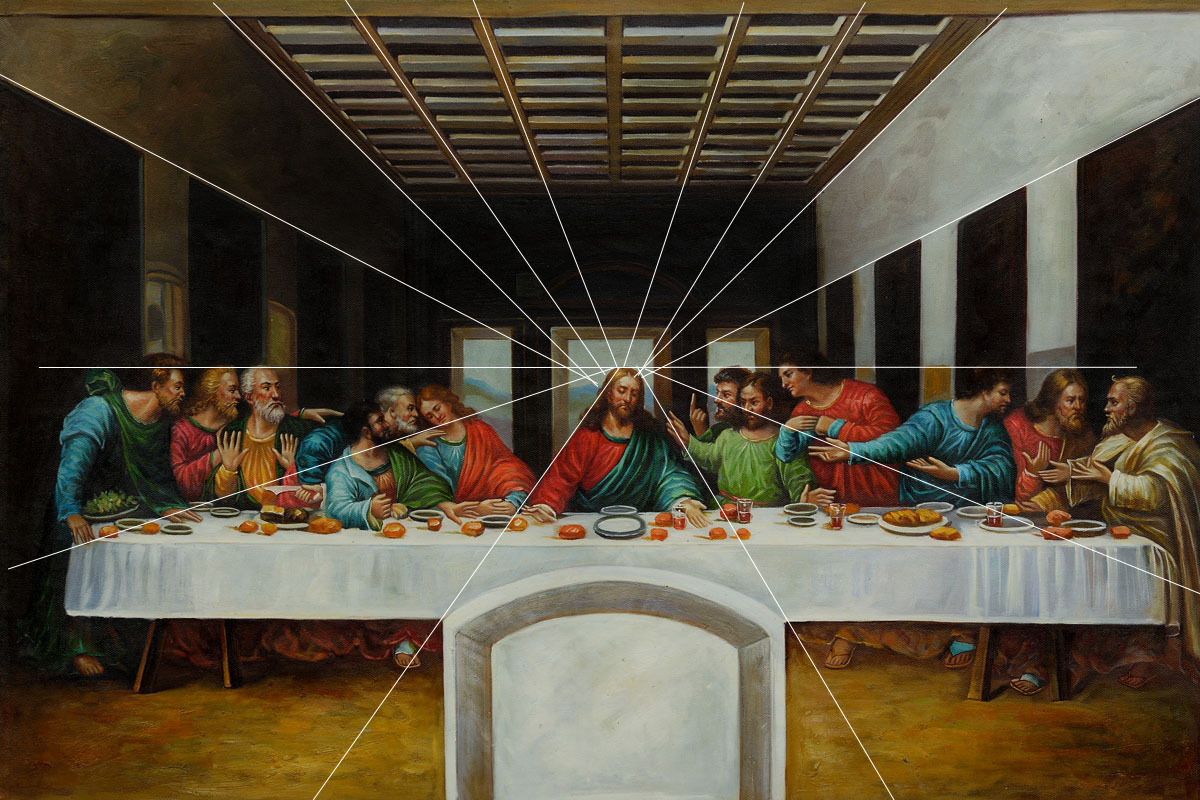Although many consider math and art to be polar opposites, they
are actually deeply intertwined. For example, the Greeks used the aesthetically
appealing Golden Ratio of 1 to 1.618 in their architecture, such as the
Parthenon. And Piet Mondrian's belief in mathematics and simple geometric
shapes inspired him to paint the universe at its simplest form, using
horizontal and vertical lines and basic colors. Math has played a pivotal role
in the evolution of art throughout history and is an art in and of itself as
well, as the study of numbers, abstractions, measurements, and generalizations
using signs, symbols and calculations.
Piero de la Francesca's famous book states that painting has three
principal parts: drawing, proportion and coloring. Proportion is the most
important of the three and is also known as perspective. In Marc Frantz’s
lesson on vanishing point, he explains how artists use geometry and vanishing
points to create one-point and two-point perspectives in their paintings. Artists
like Giotto and Brunelleschi used geometry to control the position of the
spectator within their paintings and properly paint objects to scale.
Another example of how mathematics has influenced art is
through origami. Robert Lang explains how art, math, and science intersect in
his TED talk titled “The math and magic of origami.” Lang shows how geometric
shapes drawn on square paper can be folded to produce animals and people.
What helped me
understand math’s influence on art the most was the Golden Ratio, which
mathematically represents the idea of beauty. Leonardo da Vinci’s drawing Vitruvian Man utilized the ratio to show
the perfect proportions of the human body that maximized aesthetics. Jimmy
Ruska shows how aesthetically appealing the golden ratio is by applying it to
the faces of celebrities who are widely considered attractive.
The juxtaposition of mathematics, art and science occurs
because people are taught that they are unrelated to each other early on. This
can be seen in the education system, where some students will major in art or
in mathematics or science, and will hardly ever touch classes in the other
subjects. However, I believe the use of computers by animators to develop creative works such as movies will help each subject converge.
References:
Chaney, Candace. "Art Exhibit Offers a New Way of Looking at Math." Kentucky.com. Www.kentucky.com, 14 Feb. 2013. Web. 12 Apr. 2015. <http://www.kentucky.com/2013/02/14/2516568/exhibit-offers-a-new-way-of-looking.html>.
Frantz, Marc. "Lesson 3: Vanishign Points and Looking at Art." 1 Jan. 2000. Web. 9 Apr. 2015. <Http://www.cs.ucf.edu/courses/cap6938-02/refs/VanishingPoints.pdf>.
Lang, Robert. Robert Lang: The Math and Magic of Origami.YouTube. YouTube, 31 July 2008. Web. 12 Apr. 2015. <https://www.youtube.com/watch?v=NYKcOFQCeno>.
Nicoles, Nia. "Linear and Arerial Perspective." Nias Specialist Contextual Investigation. WordPress, 18 Mar. 2014. Web. 12 Apr. 2015. <https://nianicolesw.wordpress.com/2014/03/18/linear-and-arerial-perspective/>.
Ruska, Jimmy. Golden Ratio- The Perfect Face & Change the Sex of People. YouTube. YouTube, 23 July 2007. Web. 12 Apr. 2015. <https://www.youtube.com/watch?v=GO3o9drC1mQ>.
Wander, Rodrigo. "Origami." Origami. Minhateca, n.d. Web. 12 Apr. 2015. <http://minhateca.com.br/Rodrigowbs/BR+DeepWeb/Apostilas/Apostilas+de+Japon*c3*aas/Origami>.




Chris,
ReplyDeleteI thought your blog post was well organized and did a great job covering the main concepts that were discussed in lecture and the readings regarding math and art.
I would have to agree with you on how art, science, and math are taught separately in our schools and how students are unaware of the relationship that they share. These three subject fields lean on each other to create such masterpieces in art and express a completely different side of what art is. The awareness of how artists use mathematics and science in their artwork is low because most people I feel look at the end result rather than the process in which is taken by such creative thinkers. I can honestly say that I had no idea of the amount of mathematics goes in to a painting. I think that our math, science, and art classes should intertwine more creating an awareness of how vital they are and how they impact our reality.